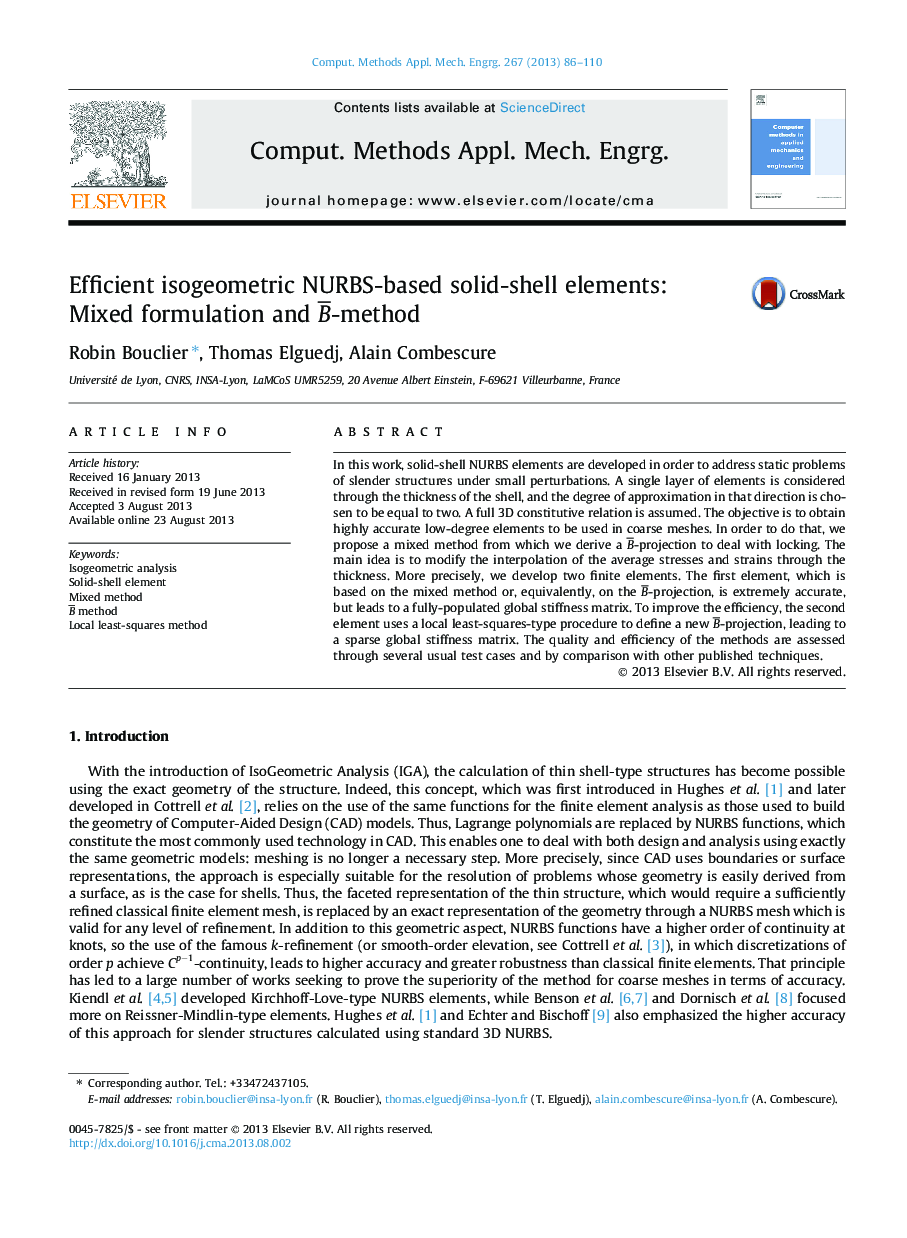| Article ID | Journal | Published Year | Pages | File Type |
|---|---|---|---|---|
| 498135 | Computer Methods in Applied Mechanics and Engineering | 2013 | 25 Pages |
•We develop solid–shell NURBS elements to address static problems of slender structures.•We propose a mixed method from which we derive a B-bar projection to deal with locking.•A local least-squares-type procedure is implemented in the B-bar projection to reduce the computation cost.•We show that the low degree NURBS elements developed are highly accurate to solve typical shell problems.
In this work, solid-shell NURBS elements are developed in order to address static problems of slender structures under small perturbations. A single layer of elements is considered through the thickness of the shell, and the degree of approximation in that direction is chosen to be equal to two. A full 3D constitutive relation is assumed. The objective is to obtain highly accurate low-degree elements to be used in coarse meshes. In order to do that, we propose a mixed method from which we derive a B¯-projection to deal with locking. The main idea is to modify the interpolation of the average stresses and strains through the thickness. More precisely, we develop two finite elements. The first element, which is based on the mixed method or, equivalently, on the B¯-projection, is extremely accurate, but leads to a fully-populated global stiffness matrix. To improve the efficiency, the second element uses a local least-squares-type procedure to define a new B¯-projection, leading to a sparse global stiffness matrix. The quality and efficiency of the methods are assessed through several usual test cases and by comparison with other published techniques.
